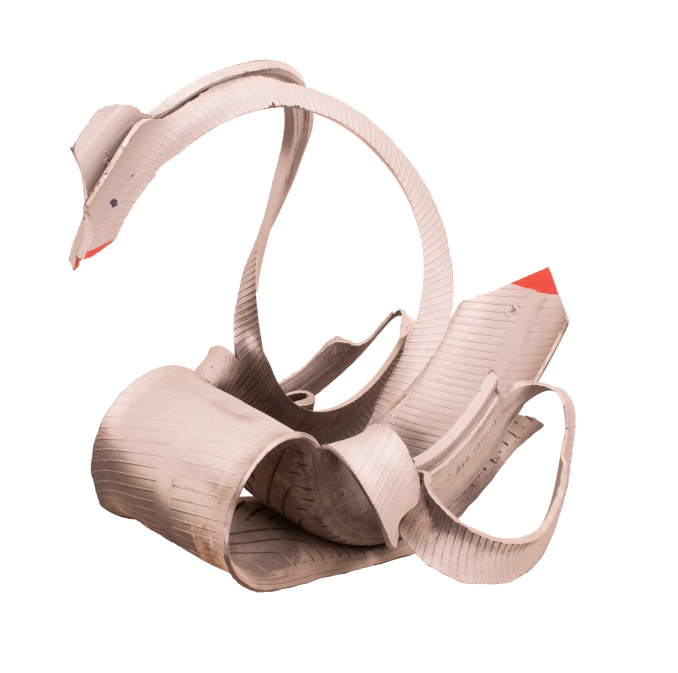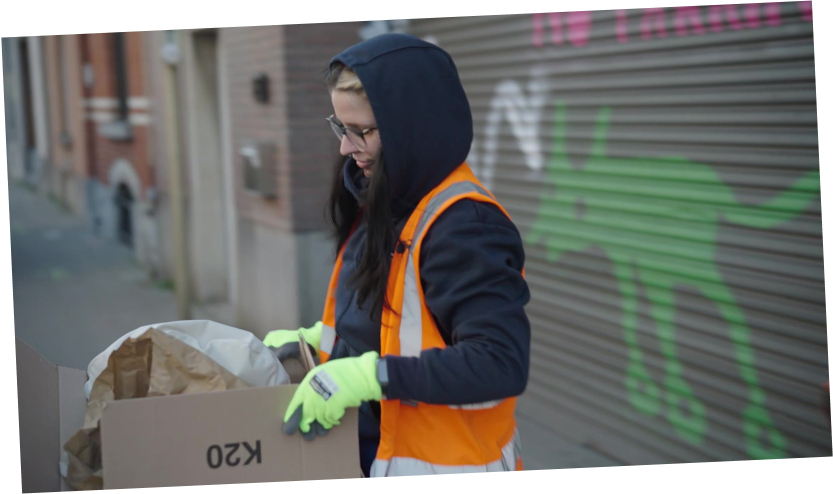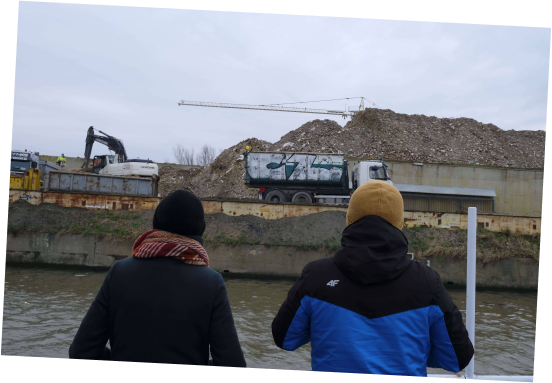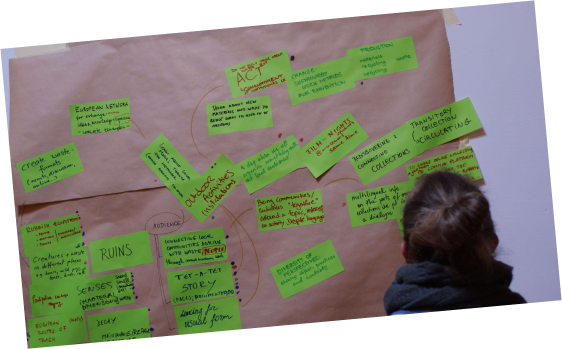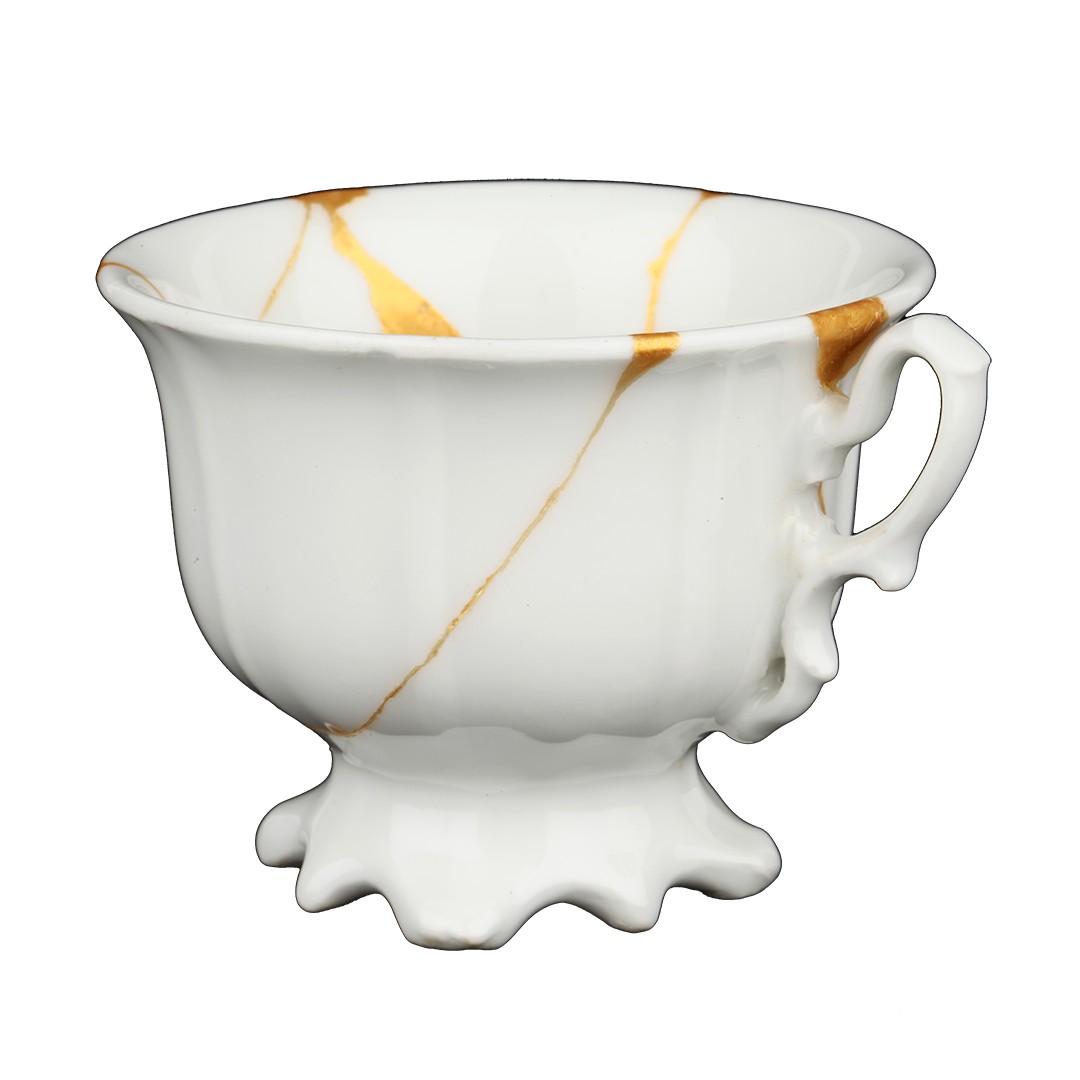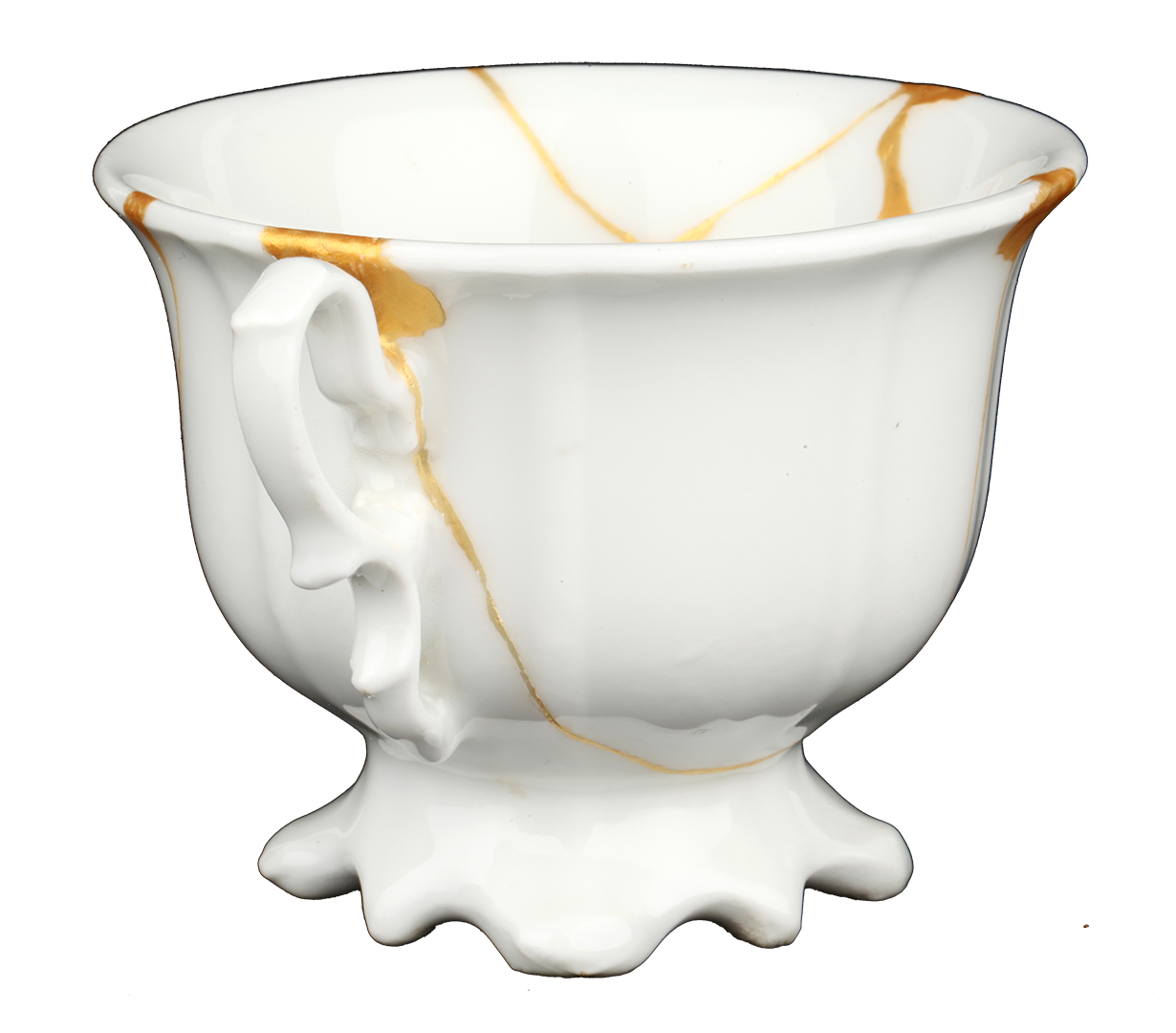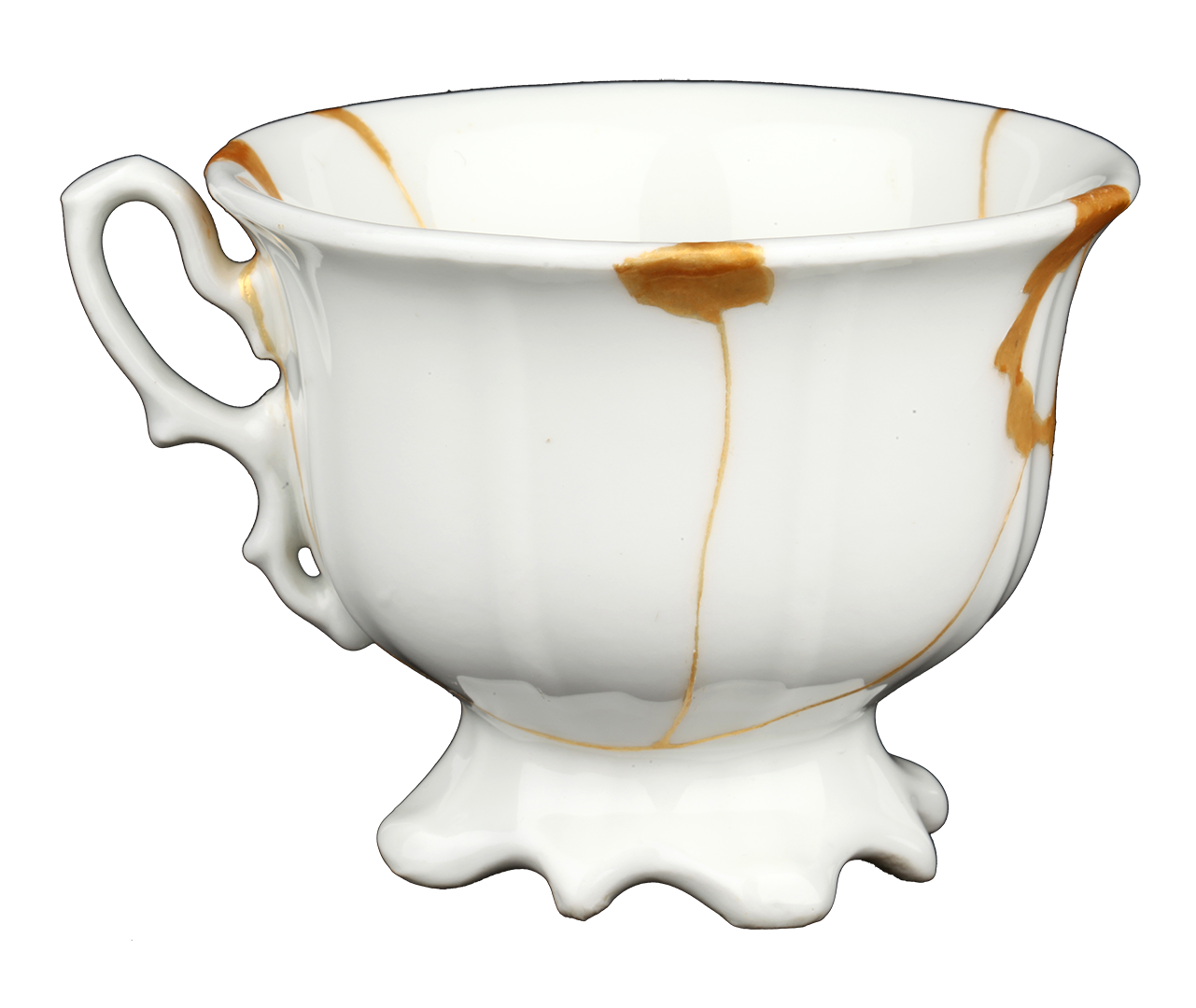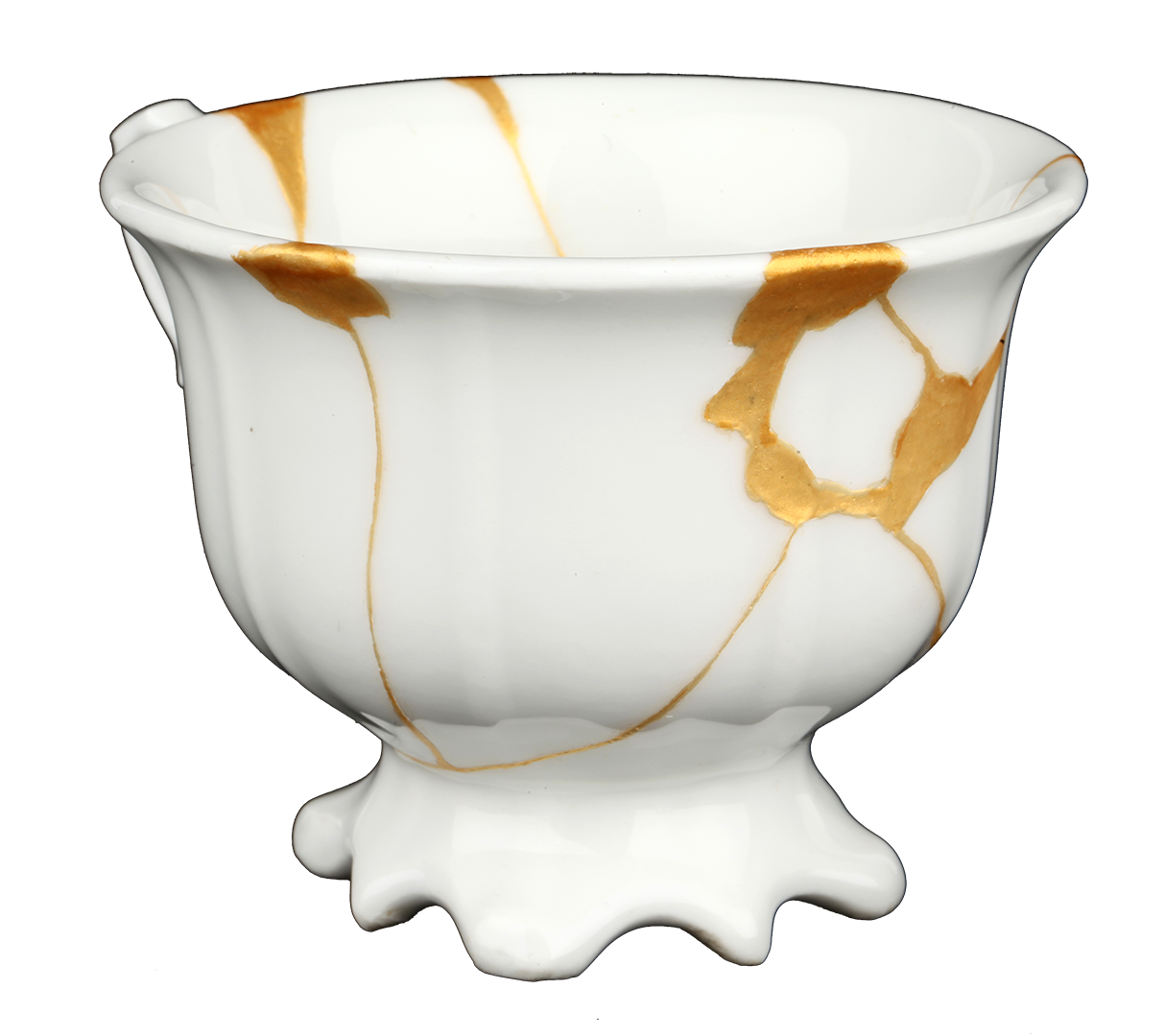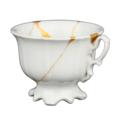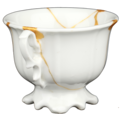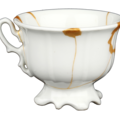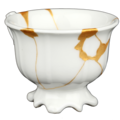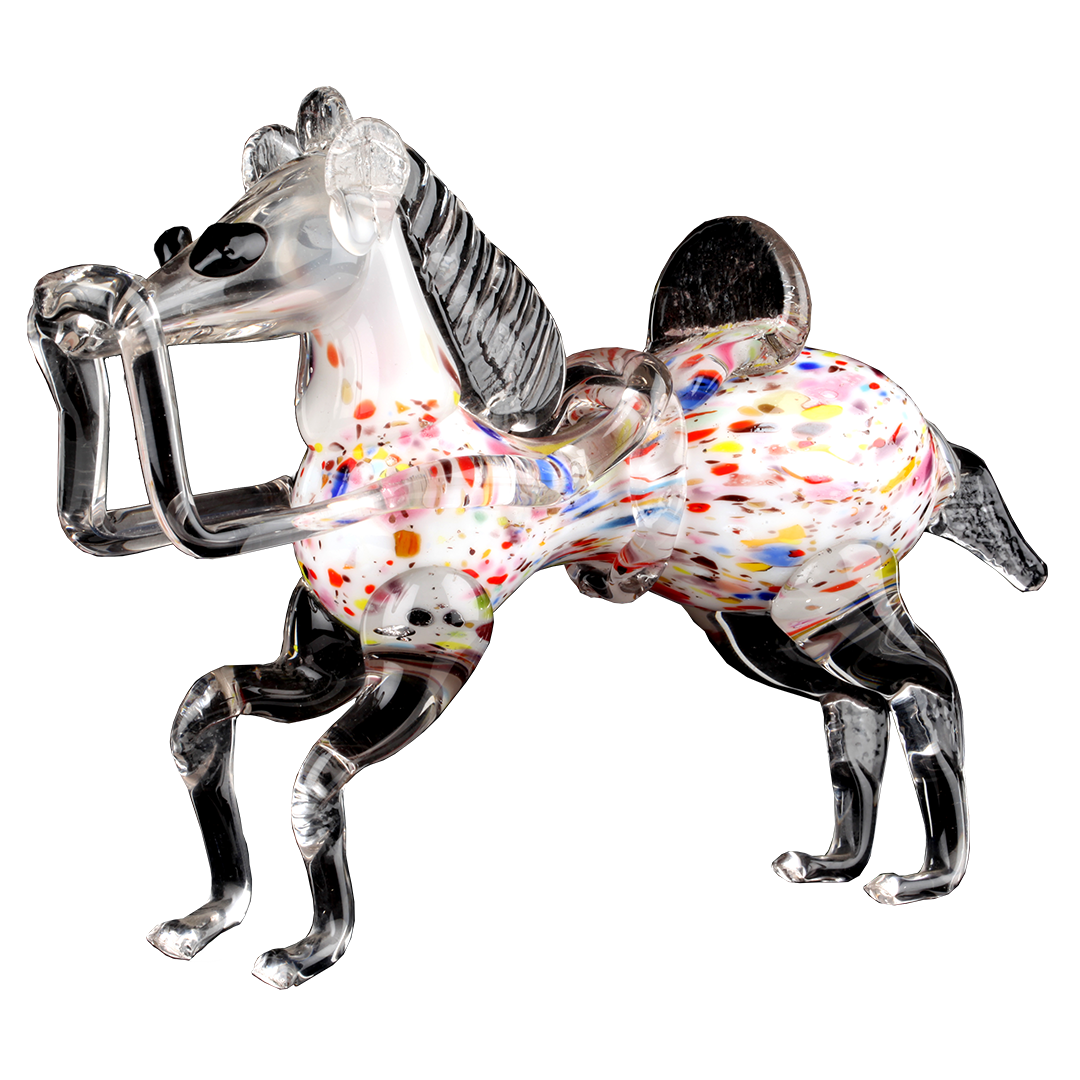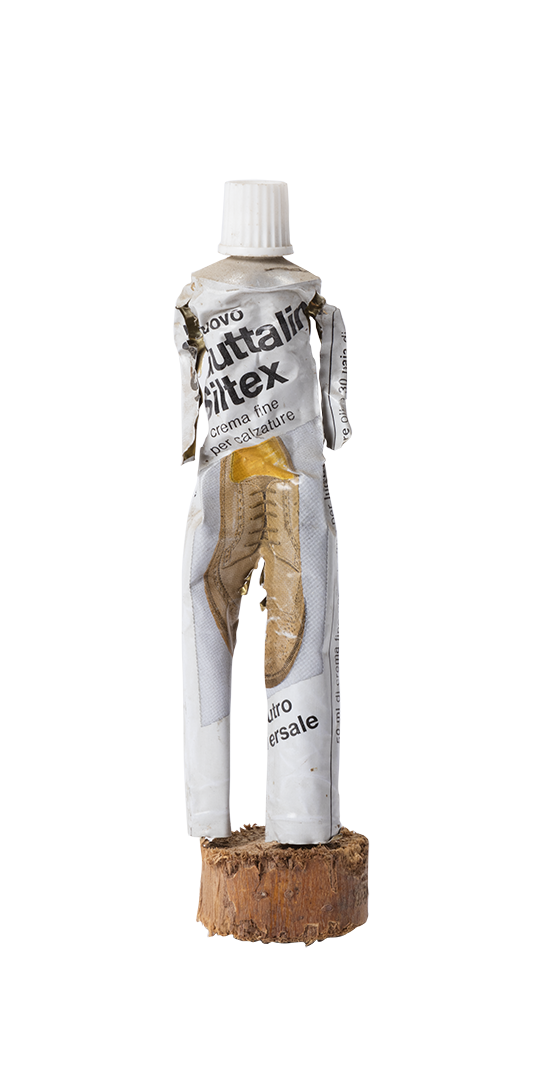Artist/Maker Valérie Rousseau, restorer
Date Production/Creation
Early 20th century (kintsugi restoration in 2021)
Entry in the museum collection
2021
Place of origin
Namur, Belgium, Europe
Current location
Museum of Walloon Life - Province of Liège, Belgium
Material
White porcelain repaired with golden glue
Dimension
6.8 x 10.1 x 8.7 cm.
Inventory Number 5061065
Keyword Home Art Repair
Copyright Province of Liège – Museum of Walloon Life
Status In storage
Image Credit Province of Liège – Museum of Walloon Life
The Japanese art of Kintsugi can change how we think about ourselves and our possessions.
What is this object about, who are the people behind it?
Tradition has it that the art of kintsugi started in Japan in the 15th century. A powerful dignitary of the time broke his porcelain tea bowl and sent it to China for repair. Dissatisfied with its restoration using metal staples, he turned to his own craftsmen, who decided to glue the pieces together using a resin made with gold. Thus was the art of kintsugi born, and all its associated symbolism: instead of concealing cracks in an object (or person), they are accepted and glorified, becoming part of its history. Kintsugi was the inspiration behind the restoration of this porcelain cup.
What places is this object related to, how European/transnational is it?
Use of the kintsugi technique has taken off in the past few years, particularly in the West where artists and craftworkers have seized on its philosophy and given it a contemporary twist.
Why and how did this object arrive in the museum’s collection?
The Museum of Walloon Life is putting on an exhibition on rubbish in 2022-2023 entitled “Ordures - L'expo qui fait le tri” (Rubbish – an exhibition that sorts it). Repairing items is one of its major themes. The Museum of Walloon Life decided to complete its display of old crockery repair techniques by having a broken cup from its collections restored using the kintsugi technique.
What is the relation of this object to waste?
Restoration of this cup using the kintsugi technique comes under the "zero waste" approach, in which objects are reused – through repairs and upcycling in particular – resulting in less waste.

